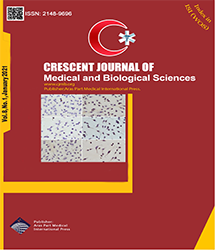
| Review | |
| Health Information Governance Program: A Review on Components and Principles | |
| Reza Rabiei1, Fatemeh Rouzbahani1, Farkhondeh Asadi1, Hamid Moghaddasi1, Hassan Emami1, Forough Rahimi2 | |
| 1Department of Health Information Technology and Management, School of Allied Medical Sciences, Shahid Beheshti University of Medical Sciences, Tehran, Iran 2School of Allied Medical Sciences, Shahid Beheshti University of Medical Sciences, Tehran, Iran |
|
|
CJMB 2021; 8: 010-014 Viewed : 3457 times Downloaded : 5343 times. Keywords : Information governance, Healthcare, Health information management |
|
| Full Text(PDF) | Related Articles | |
| Abstract | |
Objectives: The health information governance (HIG) program is an extensive organizational framework for information management across its lifecycle. This program is important as a strategy for the materialization of high-quality care for individuals, social health, and the reduction of the costs of care and the reliability of health information. Considering the spectrum of this program in pioneering countries, the current review aimed to study the HIG program in the selected countries. Methods: This review article was conducted in 2017 by searching for relevant English language articles in PubMed, Scopus, ScienceDirect, and Google Scholar databases, along with the websites of relevant organizations such as Infoway and the American Health Information Management Association. The key terms included, but were not restricted to, "health information governance program", "health information management", and "health information governance components". Finally, the data were analyzed with respect to the aim of the study. Results: The components of the HIG program, which are classified into 18 main groups, are the principles of this program including nine dimensions of accountability, goal, transparency, integrity, satisfaction with collection and disclosure, protection, compliance, availability, along with retention and disposition. Some officials and legal and natural roles are common among the three countries while some others are specific for each country. Conclusions: Considering the results of the present study, it is suggested that a strong governance structure together with the policies and regulations of health information technology should be taken into consideration in establishing a HIG program. By developing such a program at a national level, new roles are required to facilitate the implementation of the program. |
Cite By, Google Scholar
Google Scholar
PubMed
Online Submission System
 CJMB ENDNOTE ® Style
CJMB ENDNOTE ® Style
 Tutorials
Tutorials
 Publication Charge
Medical and Biological Research Center
About Journal
Publication Charge
Medical and Biological Research Center
About Journal
Aras Part Medical International Press Editor-in-Chief
Arash Khaki
Deputy Editor
Zafer Akan


















